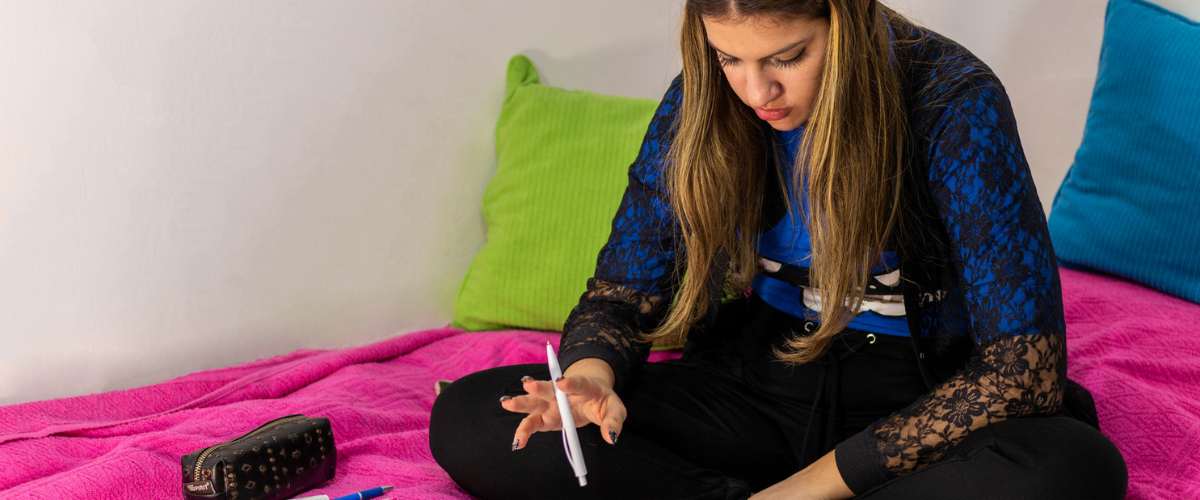Watching your child learn the first steps of independent reading can be a magical experience. As the letter patterns and phonics strategies connect, you get a front-row seat watching them learn.
Whether you’re a full-time homeschool family teaching a complete Language Arts curriculum or looking to support your early reader at home, focusing on sight words is a great place to start.
What are sight words?
Sight words, or high-frequency words, generally refer to a list of words used regularly in text.
They are used so often that they make up over two-thirds of all the print in children’s books. Edward William Dolch first published a list of sight words in 1948, a list that’s still widely used in schools today. Some schools use the updated Fry sight word list, while many use a combination of the two.
No matter which list you use, the goal is for your child to memorize these high-frequency words by heart and to be able to recognize them immediately on sight, eliminating the need for your child to stop and sound out every single word.
Why teach young kids sight words?
Teaching to sound out words through phonics skills is the key to raising a life-long reader. As your child sounds out and decodes words regularly, they learn to automatically pronounce and understand the most common words, a process a fluent reader, like yourself, does when reading – a fluent reader only needs to stop and sound out unfamiliar words.
Teaching your early reader sight words in conjunction with phonics and phonemic awareness skills significantly increases reading comprehension, or the ability to understand the text’s meaning as a whole.
It also improves reading fluency, helping your child read more easily and without stopping as much, which goes hand-in-hand with reading comprehension.
What’s the best way to teach sight words?
Memorizing sight words is a significant first step. But to be effective, a good sight word teaching strategy must include understanding the meaning. Rather than just calling out the word like a parrot, you want your child to make the connection with what the word means and represents. Here are a few strategies for helping your reader make those connections.
Start small
Starting with a list of 200+ sight words will be too overwhelming for your early reader, leading to simple memorization without truly understanding the words. Instead, start small with 10-15 words at a time and add more only after your child masters the first set.
Use the words in sentences
Be sure to help your child recognize their small set of target sight words within sentences and books rather than just alone on a flashcard. Seeing their target words in action helps them connect the word to meaning.
Teach with different learning styles in mind
Everyone learns differently, and keeping your child’s learning style in mind can help you teach more effectively. Writing the sight words and creating movement games can help your active child learn best.
What are some fun sight word activities?
Although you can buy flash card packs, you don’t have to limit sight word practice to simple repetition drills. Creating fun and engaging activities that include the word in context and get your child moving makes sight word lessons more effective.
Sight word scavenger hunt
For this activity, select a smaller set of 6-8 sight words and write on sentence strips or print them in a large font. Select a few children’s books that include the target words. Since sight words are high-frequency, finding books should be easy! As you read the books together, have your child play detective and search for the words together.
Kids love highlighters! For additional practice, type up a short text, make a copy of a book page, or find a printable text online to print. Let your child highlight the target words as you read together.
Get moving!
Make learning a game! Select a few target sight words and get your child moving with this active game, best played in a large space or outside. Write or print your target sight words on full sheets of paper or cardstock. Spread them out on the floor all around your space - if you’re outside, put something on top so they don’t blow away.
Have your child stand in the middle of the area and call out each word. Let your child race from spot to spot, identifying the words as they go.
All you need is an open wall space or even your garage door to create another fun action game. Write the target sight words on cardstock, tape them on your wall with painter’s tape, and spread them out within reach of your little learner.
Have your child touch each one as you call out the words, and extend the activity by using the target words in a full sentence for them to identify. Make this even more fun by picking up a dollar-store flyswatter, princess wand, or lightsaber, or even have them air ninja-kick the words for some laughs along the way.
Sensory play
Your early readers will love sight word sensory play. Give your child a sand tray or shaving cream on a tray, and let your child write the words. Too messy? Let your child paint the words with watercolor – for your early learners, you can even write the words in marker for them to trace with paint.
Kids love sensory tables and water tables. Write your child’s sight words on both sides of a piece of cardstock, place each inside a sealed zipper bag, and drop them in your child’s sensory table.
Whether they’re playing with colored water, rice, beads, or any other sensory material, you can increase sight word exposure this way. You can also create games, encouraging your child to find the right word card and use the word in a sentence as they play.
Find an online sight word class
Help your child learn while socializing through a small-group online sight word class on Outschool. Highly-rated teachers can help reinforce sight word skills through fun, interactive classes.
Sight words are a key component of the Kindergarten and Pre-K language arts curriculum. Learning sight words helps increase reading comprehension and fluency, but you can make learning sight words fun!
From fun online learning classes to reading tutoring, lead your child to better reading skills on Outschool today.


.svg)
.svg)







